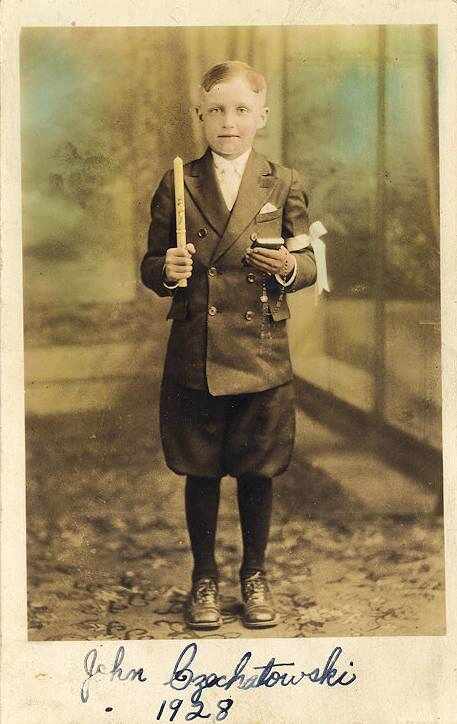
Figure 1.--This colorized studio portrait shows a Polish-American boy in his First Communion suit in 1928. The divided bac had a AZO stamp box. |

|
The White Border era seems to have brought an end to the postcard craze era. Post card collecting, in part because of the War, declined in popularity. The high quality European cards were no lionger available. America became a more serious place, especially after 1917 when the country entered the War. There were fewer family vacations and this fewer cards needed to send home. The golden age ended as imports from Germany ceased and publishers in the U.S. began printing postcards to try to fill the void. The cards were very poor quality and many were reprints of earlier Divided Back Era cards. These are easily distinguished by the white border around the pictured area. They were especially common in the 1920s. With the passing of the golden era of post card collecting, the use of the posrcard became much like it is today. Postcards became common for vacations, but were no longer a fad as was the case in the 1900s and 10s. These were mostly commercial cards, but we see some studio portraits with white border images and postcard backs. The stamp boxes are still useful in dating them.
Navigate the Boys' Historical Clothing Web Site:
[Return to:Main American postcard page]
[Return to:Main postcard page]
[Introduction]
[Activities]
[Bibliographies]
[Biographies]
[Chronology]
[Clothing styles]
[Countries]
[Contributions]
[FAQs]
[Glossaries]
[Boys' Clothing Home]
Navigate the Boys' Historical Clothing Web Site:
[Sailor suits]
[Sailor hats]
[Buster Brown suits]
[Eton suits]
[Rompers]
[Tunics]
[Smocks]
[Pinafores]
